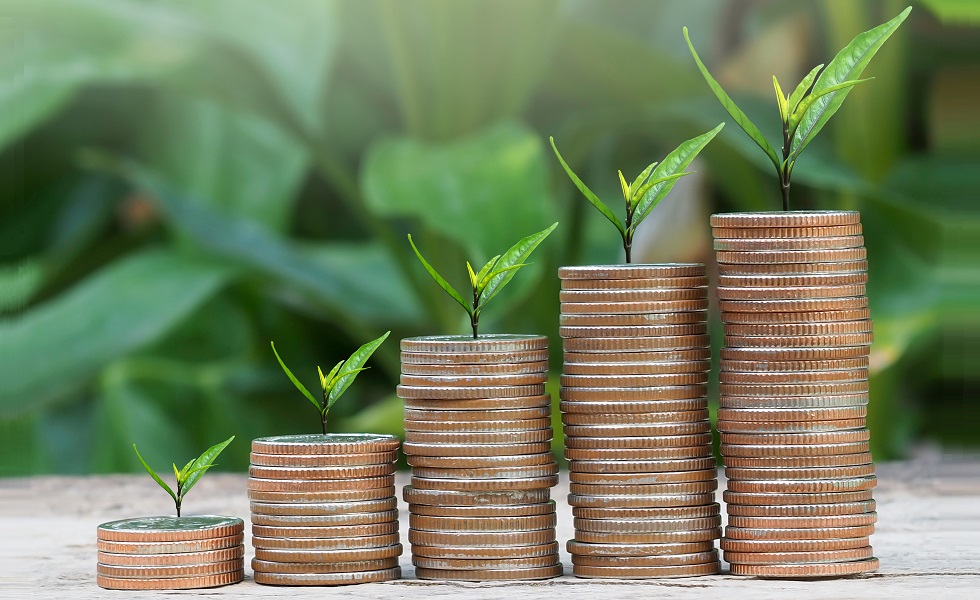GSAM: How green bonds fit in a fixed income portfolio

As climate change continues to affect economies, businesses and communities around the world, financing the energy transition is more important than ever.
The war in Ukraine has caused energy prices to soar and has further motivated European nations to reduce their reliance on Russian oil and gas. Financing decarbonization across industries will require innovative solutions and vast amounts of capital to finance their development.
Global bond markets have the potential to become a crucial source of investment in this drive toward a more sustainable future. Yet until recently, fixed income investors who wanted to invest in the climate transition and aimed to reduce the carbon footprint of their fixed income portfolios – without sacrificing liquidity and returns – had few compelling options.
The rise of increasing issuance of green bonds is changing that. Once a niche product, these bonds that finance environmentally beneficial projects have entered the investing mainstream. The market is expanding, with average growth of about 90% per year from 2016 to 2021.[1] Because of this rapid growth and the widening range of mutual funds offering exposure to green bonds, investors can incorporate them in their fixed income allocation.
Conventional Bonds With A Green Purpose
In some respects, green bonds will look familiar to investors in conventional fixed income securities. Their financial characteristics such as structure, risk and historical returns are similar to those of traditional bonds. They come in a range of maturities and investment grades, and green bondholders have the same recourse to the issuer.
The biggest difference, of course, is that green bonds have the goal of exclusively financing climate focused projects and activities such as renewable energy, clean transportation, sustainable water and energy efficiency. Green bonds' aim to deliver measurable environmental benefits make them an effective tool for funding the climate transition.
Now that green bonds have developed into an established segment of the fixed income market, making a green bond allocation is an increasingly viable option for investors. The green bond issuer base has steadily increased and become more diversified from both a sector and regional perspective. The bonds can be traded in the secondary market and the market for new issues is growing, with annual issuance expected to resume its headlong expansion in 2023 after a difficult year for fixed income generally in 2022.[2]
Similar Historical Performance To Traditional Bonds
The ultimate goal of any fixed income investment is to maximize risk-adjusted returns, and green bonds are no different. Our analysis shows that at a market level, investors can expect similar risk-adjusted returns from green bonds compared with their traditional counterparts.
Over the six years from 2016 to 2021, euro-denominated green bonds at an aggregated level outperformed their non-green equivalents by 52 basis points on an annualized basis.[3] In 2022, green bonds trailed their conventional peers[4] in performance for two main reasons related to index-level nuances, which investors should be aware of.
First, the aggregate green bond benchmark (Bloomberg MSCI Euro Green Bond Total Return Index) has a duration one year longer than the non-green equivalent (Bloomberg EuroAgg Total Return Index) largely because of sovereigns such as the European Union issuing at the long end of the curve when interest rates were lower.[5] This makes the green bond benchmark more sensitive to the aggressive rate increases adopted by many central banks in their bid to curb inflation.
Second, while the corporate green bond benchmark (Bloomberg MSCI Global Green Bond Corporate 5% Issuer Cap Index) has the same overall credit quality as the non-green equivalent (Bloomberg Global Agg Corporate Total Return Index), it has a slight bias to issuers with a BBB credit rating at the lower end of the investment-grade scale and includes more real estate investment trusts, which underperformed in 2022.[6] The corporate green bond benchmark also understandably does not include oil and gas companies, which outperformed as energy prices soared in 2022.
Green Bond Market Nuances
In addition to the green bond benchmark’s longer duration and slight bias toward bond issuers rated BBB, there are structural differences in the market. The first of these is the weight of various currencies in the market. The overall global debt securities market is dominated by the US dollar. About 45% of outstanding bonds are denominated in dollars, followed by the euro at 21%.[7]
In the green bond market, by contrast, euro-denominated bonds dominate to an even greater degree than the dollar in the overall market. Euro-denominated bonds make up about 66% of the outstanding green bond market, while the dollar makes up 20%, though issuance in dollars is growing.[8]
Investors should also keep in mind that the composition of the corporate green bond market differs significantly from the non-green equivalent. Industrial companies issue the majority of bonds in the broader market – approximately 52% – while financial institutions account for nearly 40% and utilities for just over 8%.[9]
In the green bond market, the largest category of issuer is financial institutions at 61% of outstanding bonds, followed by utilities at nearly 28%, and industrial issuers fall to third with 11%.[10] Such structural differences can affect performance at the index level at various points in the cycle.
For example, the larger share of utilities in the green bond benchmark can give a lift to the performance of the index in the sort of market conditions we have seen in 2022, because utilities are non-cyclical stocks that often outperform the market when economic growth slows. Conversely, when economic growth is strong, non-cyclical stocks like utilities could be a drag on performance.
Advancing The Climate Transition
In addition to a competitive risk-return profile compared with conventional bonds and a liquid market that has become diversified from both a sector and regional perspective, green bonds aim to provide the additional benefit of financing sustainable projects.
By buying green bonds investors can potentially contribute to advancing the goals of the Paris Agreement on climate change[11] and the United Nations’ Sustainable Development Goals (SDGs).[12] Issuers are increasingly aligning their securities with these global climate initiatives, and asset managers offering exposure to the green bond market are using the goals spelled out in the SDGs and the Paris Agreement to screen bonds for potential investment and to demonstrate the potential impact of investing in such bonds on client portfolios.
Still, investors can find it challenging to fully understand the positive environmental impact that green bonds could have at the portfolio level. The market has adopted few guidelines around metrics for environmental impact, for example, which might be due to the diversity in the use of proceeds.
Selecting a green bond manager with stringent selection criteria, detailed reporting and robust risk management can help investors limit downside risk and discover opportunities with potentially attractive returns. Replacing a portion of a conventional fixed income portfolio with green bonds of a similar credit quality and duration can also potentially bring a range of other benefits. They can finance assets such as green buildings that could bear a lower credit risk over time, and they can help mitigate climate change-related risks in portfolios resulting from policy changes such as carbon taxation.
Does Green Impact Come At A Cost?
A much-debated topic among investors is the greenium, or green premium, which implies that supporting environmental concerns by investing in green bonds comes at the cost of financial performance. The idea is that a green bond with the same terms as a conventional bond such as rating and maturity can trade below conventional peers in terms of spread levels. As a result, holding such bonds to maturity could yield a lower return.
In theory, there is no reason why the fact that a bond is green should affect its price. Although green bond issuance does involve some additional costs compated with conventional bonds relating to third-party review and certification, these have been declining over time.
One aspect of the market that has supported the greenium has been the combination of high investor demand for green bonds and relatively short supply. As issuance increases, the willingness of investors to pay more for green bonds may wane. One report published in 2021 by the Association for Financial Markets in Europe estimated that green premia for corporate green instruments had “significantly tightened” to virtually zero basis points.[13]
While there is some evidence that indicates the existence of a greenium in some less-developed sectors of the green bond market, across the market as a whole, the greenium has narrowed considerably in recent years. The transition to a low-carbon global economy is a complex challenge.
One of the fundamental challenges in the years ahead will be to finance the substantial investment needed to develop everything from green infrastructure to the cutting-edge technologies that will be needed to achieve net zero emissions by 2050 and slow global warming. We believe the continued focus of bond issuers on climate mitigation and adaptation creates strong growth potential for green bonds, and this growth will expand the opportunities for investors.
[1] Source: Goldman Sachs Asset Management, Bloomberg. As of December 31, 2021.
[2] Source: Goldman Sachs Asset Management and Bloomberg. Estimate of € 600 billion of green bond issuance in 2023 —potentially taking the market to more than € 2 trillion — as sovereigns and corporates remain committed to environmental ambitions. This forecast assumes lower market volatility in 2023 and incorporates our estimate of postponed issuance from 2022.
[3] This conclusion is based on a comparison of the Bloomberg MSCI Euro Green Bond Total Return Index with the Bloomberg MSCI Euro Aggregate Total Return Index. We have chosen to use euro-based indices to make our comparisons because the multi-currency nature of global green bond indices and their non-green counterparts makes any comparison very difficult. Prior to 2016, the green bond market was not sufficiently developed to allow for a meaningful comparison. See Appendix.
[4] In 2022, the Bloomberg MSCI Euro Green Bond Index fell by nearly 18% as of December 6, 2022 while the Bloomberg MSCI Euro Aggregate Index declined by 14%, according to Bloomberg data.
[5] Source: Goldman Sachs Asset Management and Bloomberg. As of December 6, 2022.
[6] Source: Goldman Sachs Asset Management and Bloomberg. As of December 6, 2022.
[7] Breakdown based on the Bloomberg Global Aggregate Total Return Index as of December 6, 2022.
[8] Breakdown based on the Bloomberg MSCI Global Green Bond Index as of December 6, 2022.
[9] Composition based on the Bloomberg Global Aggregate Corporate Total Return Index as of December 6, 2022.
[10] Composition based on the Bloomberg MSCI Global Green Bond Corporate 5% Issuer Cap Index as of December 6, 2022.
[11] The Paris Agreement, signed in 2015, is an international treaty that aims to cut greenhouse gas emissions and limit global warming this century to well below 2°C compared with pre-industrial levels.
[12] The Sustainable Development Goals, adopted by the UN in 2015, are a 15-year action plan for protecting the environment, ending poverty and reducing inequality.
[13] Source: Association for Financial Markets in Europe, “Q1 2021 ESG Finance Report.” As of March 31, 2021.










